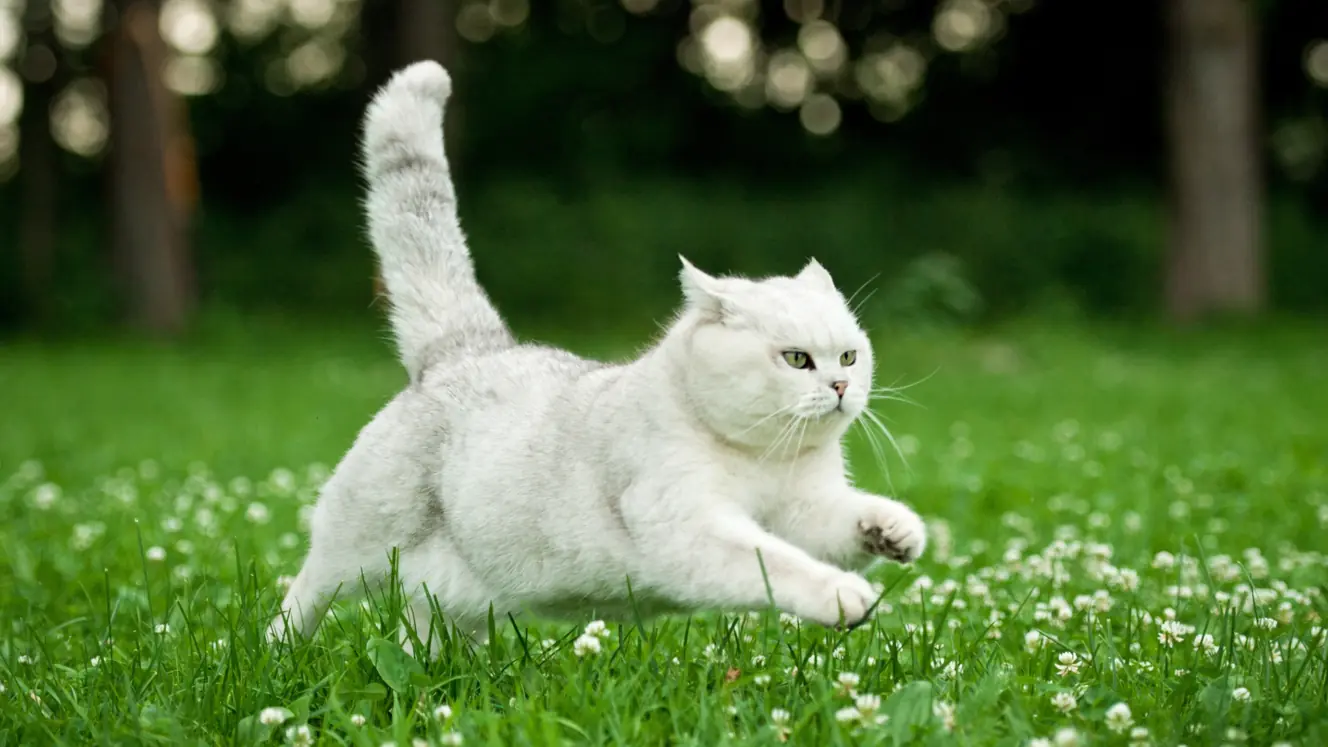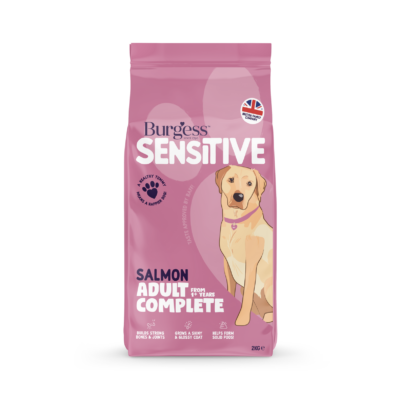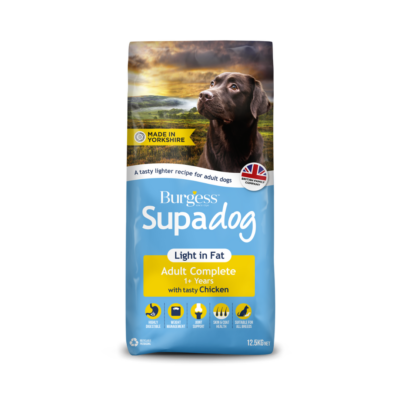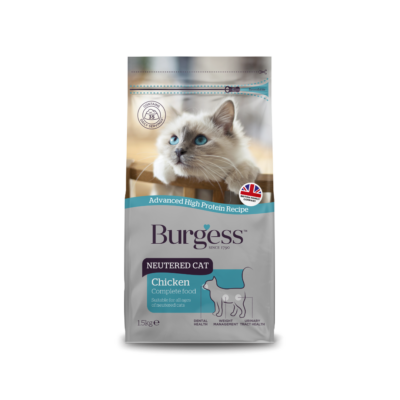
“Exercise is the miracle cure we've always had, but for too long we've neglected to take our recommended dose,” enthuses the NHS. “Whatever your age, there's strong scientific evidence that being physically active can help you lead a healthier and happier life. Research shows that physical activity can also boost self-esteem, mood, sleep quality and energy.”
And, if it works for humans, our pets shouldn’t miss out either. The Healthy Pet Club says: “As with us, one of the main benefits of exercising your pet is for health and fitness reasons. This ensures that their muscles remain strong and supple, and to also ensure that they don’t become overweight.”
The extra benefits of exercise for pets
As well as helping our pets keep in good physical shape, the benefits of exercise don’t stop there.
Provet, which provides advice and resources for veterinary professionals, states: “Exercise is important as it allows our pets to express their normal instinctive behavioural traits including inquisitive exploration, the use of scent, sight and hearing, tracking, stalking, play-fighting, play-defensive behaviour, hiding, chasing, greeting members of the same species, dealing with strange objects and dealing with animals from different species.”
Exercise can also have a positive effect on anxious or stressed-out pets.
Pet Remedy, which creates products to help calm pet animals adds: “Exercise releases endorphins, which are natural stress-relieving hormones. These hormones help to reduce anxiety and promote feelings of wellbeing in your pet.”
The Devon-based company goes on to outline some of the other key benefits of exercise for anxious pets:
- Exercise provides mental stimulation: By engaging in physical activity, pets can focus their energy on something positive and enjoyable, which can help to distract them from things that make them anxious.
- Exercise promotes healthy sleep: It can help to promote healthier sleeping patterns in pets, which is important for overall health and wellbeing. Pets that don’t get enough exercise may be more likely to experience sleep disturbances, which can exacerbate anxiety.
- Exercise builds confidence: Pets that engage in regular exercise can develop greater confidence and self-esteem. This can be particularly helpful for pets with anxiety, as increased confidence can help them to feel more secure and less anxious in new situations.
Pet Health Info adds: “A well-exercised pet is less likely to engage in destructive behaviours borne out of boredom or excess energy. Regular physical activity helps channel their energy in positive ways.”
CLEVER FOOD SWAPS TO HELP YOUR PETS GET IN SHAPE
Burgess Pet Care has developed ‘light’ foods for dogs, cats, and rabbits who need to slim down. The nutritious and delicious range includes: Burgess Supadog Light in Fat Adult Complete with Tasty Chicken, Burgess Neutered Cat and Excel Light Rabbit Nuggets With Mint.
What are the best ways to encourage your pets to exercise more?
The experts at Pet Remedy have some seasoned advice on how to get started:
- Consult your vet: Before beginning any new exercise routine, it’s important to discuss it with your vet. They’ll be able to provide you with realistic goals for your pet based on their age, breed and general health levels.
- Start slow: If your pet isn’t used to regular exercise, make sure that you start slow and gradually increase the intensity and duration of their physical activity. This can help to prevent injury and ensure that your pet enjoys the experience.
- Be consistent: Try to establish a consistent exercise routine that fits your pet’s schedule and stick to it as much as possible.
YOUR DOG’S DAILY EXERCISE ROUTINE
While all dogs need daily exercise, how much depends on their breed, age, health and even their personality. Even dogs of the same breed may have different requirements – one dog might enjoy endless country walks, while another prefers playing games in the park.
Burgess in-house vet, Dr Suzanne Moyes MVB MRCVS, advises: “Throughout their life, dogs need different amounts of exercise. While your young dog is growing, it’s vital to protect their joints by introducing them to exercise slowly – a puppy won’t be able to do a two-hour walk. As your dog ages, they may not be able to keep up with you as they once did. If your canine companion is still full of energy when you get home, it’s a good indication that they need more exercise. Dogs that struggle on walks or aren’t keen to go out may require less – or it could be that there’s an underlying health issue. Always check with your vet that your exercise routine is suitable for your dog.”
When devising the most appropriate exercise routine for your dog, veterinary charity PDSA recommends:
- You don’t have to do it all in one go, in fact it’s better to split activity time into several shorter sessions over the day.
- Vary your route to keep your walks interesting and exciting.
- Mix in plenty of playtime and training into your dog’s regular routine.
- Don’t rush your dog on walks and always allow them to stop and have a good sniff around– this is important for their mental health.
- Dogs should also be able to spend some off-lead time in a secure area. If this is your garden, make sure it’s a good size for your breed (large breeds need big gardens) and is dog-proof.
- Along with daily walks, activities such as swimming, agility, and flyball are other fun ways to vary your dog’s routine to keep their mind and body healthy.
Is your dog a Burgess dog? Join the Burgess Pet Club for exclusive offers and rewards!
HOW TO HAVE AN ACTIVE CAT
Curious kittens love to play – it helps them find out all about the world around them, aids their physical development and hones their fabulous feline skills. For older cats, play is a great way to keep fit, lean and healthy, as well as keeping their brain alert and active.
If you have a rather sedentary cat, encouraging them to play games – even for just five minutes a day – will have a big impact on their health and wellbeing.
Dr Sarah Ellis, Head of Cat Mental Wellbeing and Behaviour at feline welfare charity International Cat Care, says: “We shouldn’t assume that older cats don’t enjoy or need to play, just because they may not initiate it. Remember, cats are opportunistic, so if the opportunity isn’t presented, our older cats may not engage. But the toss of a ping pong ball or the swooping of a feather toy on the end of the wand can see even the oldest of cats instantly switch into play mode! Play is particularly important for indoor cats whose only outlet for predatory behaviour is through toys.”
For cats, the best games are those that make the most of their natural repertoire of behaviours – stalking, pouncing, chasing and batting objects with a paw, exploring, climbing, jumping and patrolling. These ‘hunting’ skills, replicated by pursuing or swiping at a toy, release feel-good hormones called endorphins, which boost feelings of wellbeing.
As cats are attracted to movement, choose toys that you can move around in rapid and unpredictable ways, just like a mouse or bird. Toys that reflect light are particularly attractive. Cats also like toys with different textures that are around the size of their natural prey.
Another great way to get your cat companion moving is by making them work for their dinner, which exercises their bodies and stimulates their minds.
Rather than just feeding from a bowl, International Cat Care recommends taking a more creative approach to feeding, explaining it like this: “Wild living cats spend about 70% of their daily activities on feeding-related behaviours. Puzzle feeders are a great way to for cats to receive food in a way that promotes physical activity and problem solving. There are a huge range of different puzzle feeders that can be bought or made at home easily and cheaply. They can be as simple as a small amount of dry food wrapped up in a piece of paper that the cat can work out how to get into, or a simple hide-and-seek game. Even the most basic of these give cats more stimulation than eating from a bowl.”
Is your cat a Burgess cat? Join the Burgess Pet Club for exclusive offers and rewards!
HELP YOUR BUNNY CHUMS TO MOVE IT, MOVE IT!
While wild rabbits run about five miles a day, pet bunnies differ in their exercise needs according to age and breed. Younger rabbits tend to be a lot more active, whereas older rabbits usually sleep more but still need regular exercise.
Larger breeds tend to be less active than small or dwarf breeds, while neutered or spayed rabbits slow down a little. Ideally, rabbits should be able to exercise whenever they want to – but a minimum of four hours free run a day is recommended, ideally split into two exercise periods morning and evening of about two hours each.
Burgess in-house vet, Dr Suzanne Moyes MVB MRCVS, advises: “Without adequate exercise, the skeletal frame of a pet rabbit suffers. Exercise helps young rabbits develop a healthy bone structure and helps adult bunnies maintain a healthy physique. If bunnies don’t have enough to do, they’ll get bored and may overeat, causing obesity. For rabbits, being overweight makes it harder for them to move about, causing a range of health problems. These can include heart problems and arthritis. And, if they can’t turn around to clean themselves properly, they can become vulnerable to flystrike (when flies lay eggs, which hatch into maggots and eat the rabbit’s flesh). Bored, inactive rabbits may also over-groom themselves, making them susceptible to hairballs.”
Buns need an exciting space where they can hop, jump, run explore and forage. To encourage them to be more active, give your bunnies plenty of things to do – tunnels to run through, toys to investigate and play with and a chance to dig. A shallow tray filled with potting compost is ideal.
Playing games with your rabbits is also a great way to encourage exercise. Small pet expert Marylou Zarbock says: “Spend some time observing your little friend. What is his or her personality like? Does he startle easily? Is she a morning rabbit or a late-night rabbit? Is exploring his thing, or is tossing items about more his style? Knowing your pet pal’s likes and dislikes helps you choose activities the two of you can enjoy together.”
Most buns like to play and throw toys around, so incorporating feeding hay (a vital part of your buns’ diet) as part of play activities is a great way to encourage your bunnies to pull, bite and chew at it. A willow ball or cardboard tube filled with hay is ideal for batting about. Try putting a bunch in a sheet of brown paper and tie the ends with a strand of hay to look like a Christmas cracker. Your rabbits will love chucking this around and then ripping it open to get to the hay inside, which is great exercise.
Are your bunnies Burgess bunnies? Join the Burgess Pet Club for exclusive offers and rewards!
GIVE YOUR SMALL PETS PLENTY OF ROOM TO MOVE
Understanding what your small pets need to live their best life will go a long way to enabling them to stay fit and healthy. Providing them with the right type of home with a comfortable place to rest and hide as well as space to exercise and explore is key to their health and happiness.
As a guide, whatever small pets you have – guinea pigs, chinchillas, hamsters, ferrets, pet rats, gerbils, degus or pet mice – all pet animals need:
- Plenty of space in safe, secure, suitable accommodation.
- Companionship of their own kind (except for Syrian hamsters who prefer solo living).
- Lots of things to do that enable them to express their natural behaviours such as playing, running, digging, foraging, jumping etc.
- The correct diet – plus a few healthy treats to add variety!
CARE MORE Find lots of useful advice on caring for your small pets from Burgess, the pet experts.
ONLY THE BEST FOR YOUR PETS
Using the expertise and experience built over the centuries, Yorkshire-based family company Burgess Pet Care produces high-quality, award-winning pet foods – such as food for dogs with sensitivities, food specially created to support neutered cats – and has launched many innovations. These include the world’s first food specifically formulated for indoor rabbits and the world’s first indoor guinea pig nuggets which are made with a calm formula.
PET TALK If you love animals and want the latest pet news, expert advice and top tips, head over to the
If you found this interesting, you may also like:
HOW TO TELL IF YOU HAVE A HAPPY PET Wheek-wheeking, bruxing, dooking, chirping, binkying, popcorning – there are all sorts of ways our pets tell us they’re feeling good, once you know what to look for...
HOW TO HELP YOUR PETS ENJOY WINTER Love it or hate it, winter takes up a sizeable chunk of the year and has a big impact on our pets. But there’s lots you can do to boost the feelgood factor for your furry friends...
KEEP CALM AND CUDDLE YOUR PETS! Is winter getting you down? Find out how interacting with your pets can boost your mood.
WILD AT HEART Inside every pampered small pet is the desire to exhibit their innate, hardwired, natural behaviours which reveal their wild origins. It’s the reason why bunnies want to dig and burrow, guinea pigs like to keep a watchful eye on what’s going on from a safe hiding place, hamsters stuff food in their cheek pouches and chinchillas prefer to sleep hunched up. Find out more about the fascinating behaviours of our favourite small furries.
THINGS TO MAKE AND DO When it comes to enriching toys for your pets to brighten up the dreary days of winter, why not get crafty and do it yourself?
GAME PLAN From ‘treat-seeking missions’ to indoor circuits, getting creative with cardboard box activity centres and paper bag wraps, we’ve lots of ideas for you to boost the feelgood factor for your four-legged friends.
MAKE EVERY DAY A PLAY DAY FOR YOUR PETS Not only is play important for young humans, it’s also essential for young animals too. As well as being lots of fun, play is how they learn and explore the world around them.
COME IN FROM THE COLD Practical ways from feline experts to help your cat cope with winter. From top tips for helping outdoor loving cats cope with cold snaps and how to make indoor life especially cosy, to advice on how to make time inside much more fun for your feline friend.
10 WAYS TO KEEP YOUR SMALL PETS SNUG AND WARM THIS WINTER Did you know that while rabbits cope with cold weather quite well, guinea pigs don’t like it all and should be brought indoors and, in winter, ferrets can be prone to getting flu? To ensure your small pets keep cosy in the cold, we’ve lots of practical ideas and must-read advice...
WET DAYS OUTDOORS AND MUDDY PAWS By investing in a few clever pieces of kit, both you and your canine chum can get through the wettest days of winter with ease.
WISE UP TO WINTER COLDS AND FLU During the winter, it’s not only us humans that can feel a little under par, thanks to the range of seasonal cold and flu viruses that do the rounds. Our pets can also be susceptible to a range of unpleasant illnesses and infections.

















